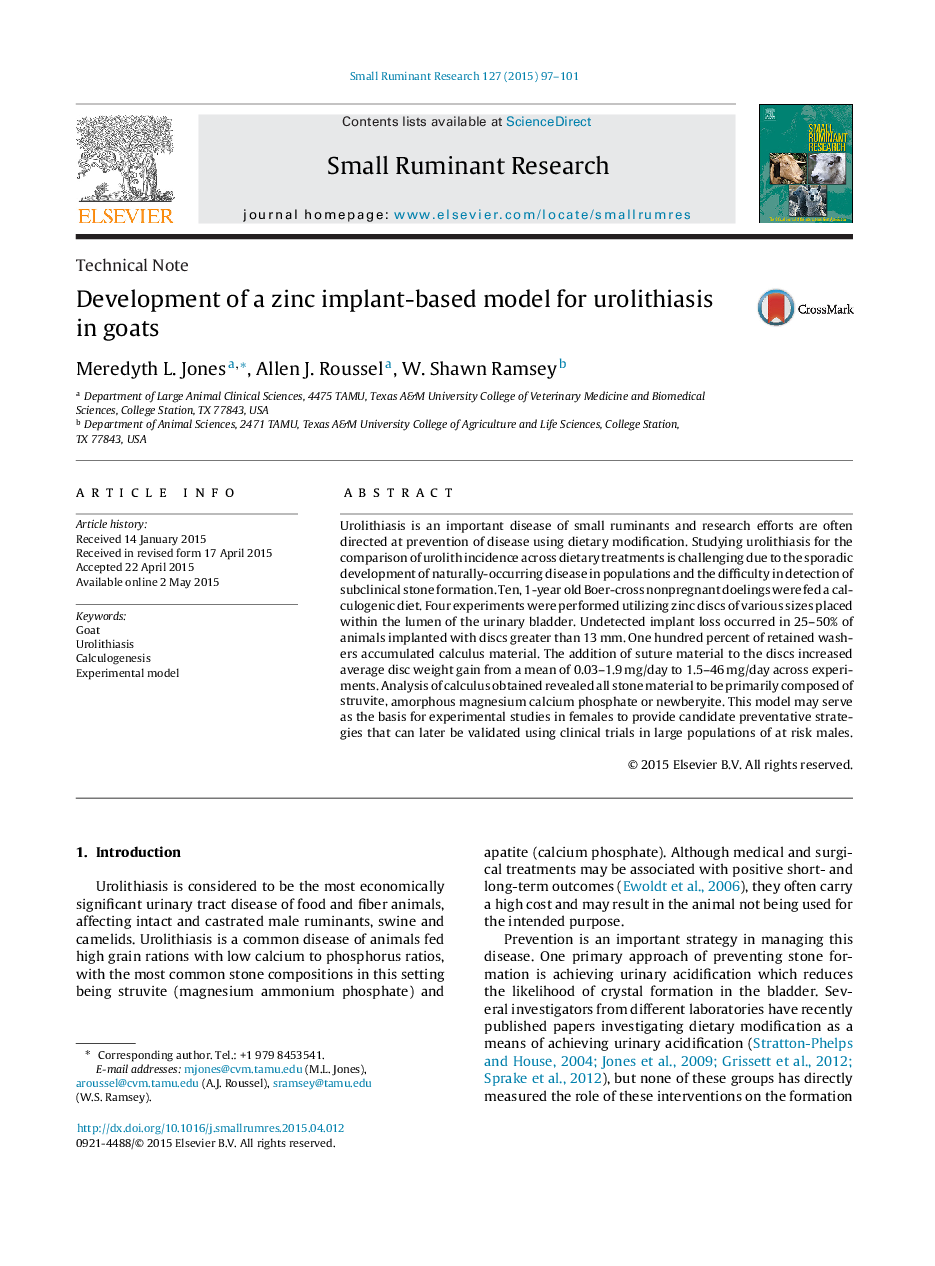| Article ID | Journal | Published Year | Pages | File Type |
|---|---|---|---|---|
| 2456925 | Small Ruminant Research | 2015 | 5 Pages |
•We developed a model that accumulates struvite and struvite-related urinary calculi in goats.•Struvite, AMCP, newberyite and oxalate stone types accumulate on zinc implants in goats.•Using this model, female goats may be used to study urolithiasis.
Urolithiasis is an important disease of small ruminants and research efforts are often directed at prevention of disease using dietary modification. Studying urolithiasis for the comparison of urolith incidence across dietary treatments is challenging due to the sporadic development of naturally-occurring disease in populations and the difficulty in detection of subclinical stone formation. Ten, 1-year old Boer-cross nonpregnant doelings were fed a calculogenic diet. Four experiments were performed utilizing zinc discs of various sizes placed within the lumen of the urinary bladder. Undetected implant loss occurred in 25–50% of animals implanted with discs greater than 13 mm. One hundred percent of retained washers accumulated calculus material. The addition of suture material to the discs increased average disc weight gain from a mean of 0.03–1.9 mg/day to 1.5–46 mg/day across experiments. Analysis of calculus obtained revealed all stone material to be primarily composed of struvite, amorphous magnesium calcium phosphate or newberyite. This model may serve as the basis for experimental studies in females to provide candidate preventative strategies that can later be validated using clinical trials in large populations of at risk males.
